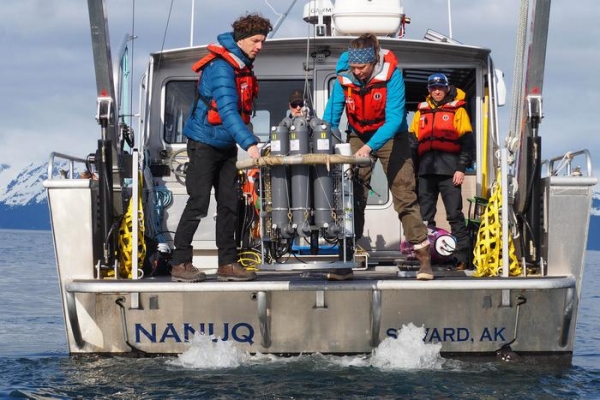Scientists around the world rely on ocean monitoring tools to measure the effects of climate change. Researchers at the University of Alaska Fairbanks and their industry partners have advanced the technology available to measure carbon dioxide in the ocean. Their design, published in the journal Ocean Science, is now available to the scientific community.
During the past six years, a team from the UAF International Arctic Research Center and private companies developed a way to equip an unmanned, underwater vehicle called a Seaglider with a sensor that monitors carbon dioxide. The sensor communicates with a satellite to provide high spatial and temporal resolution data for weeks at a time. This continuous flow of data gives scientists a clear picture of ocean chemistry, but it took some ingenuity to bring the project together.
IARC’s industry partners — Advanced Offshore Operations and 4H JENA Engineering — made the Contros HydroC sensor lighter and more compact so it would fit the Seaglider.
Read more at: University of Alaska - Fairbanks
Claudine Hauri and her industry partners prepare to take measurements of carbon dioxide and other ocean chemistry parameters from aboard the research vessel Nanuq in 2022. (Photo Credit: Heather McFarland)
Sci/Tech Top Stories Ecosystems

